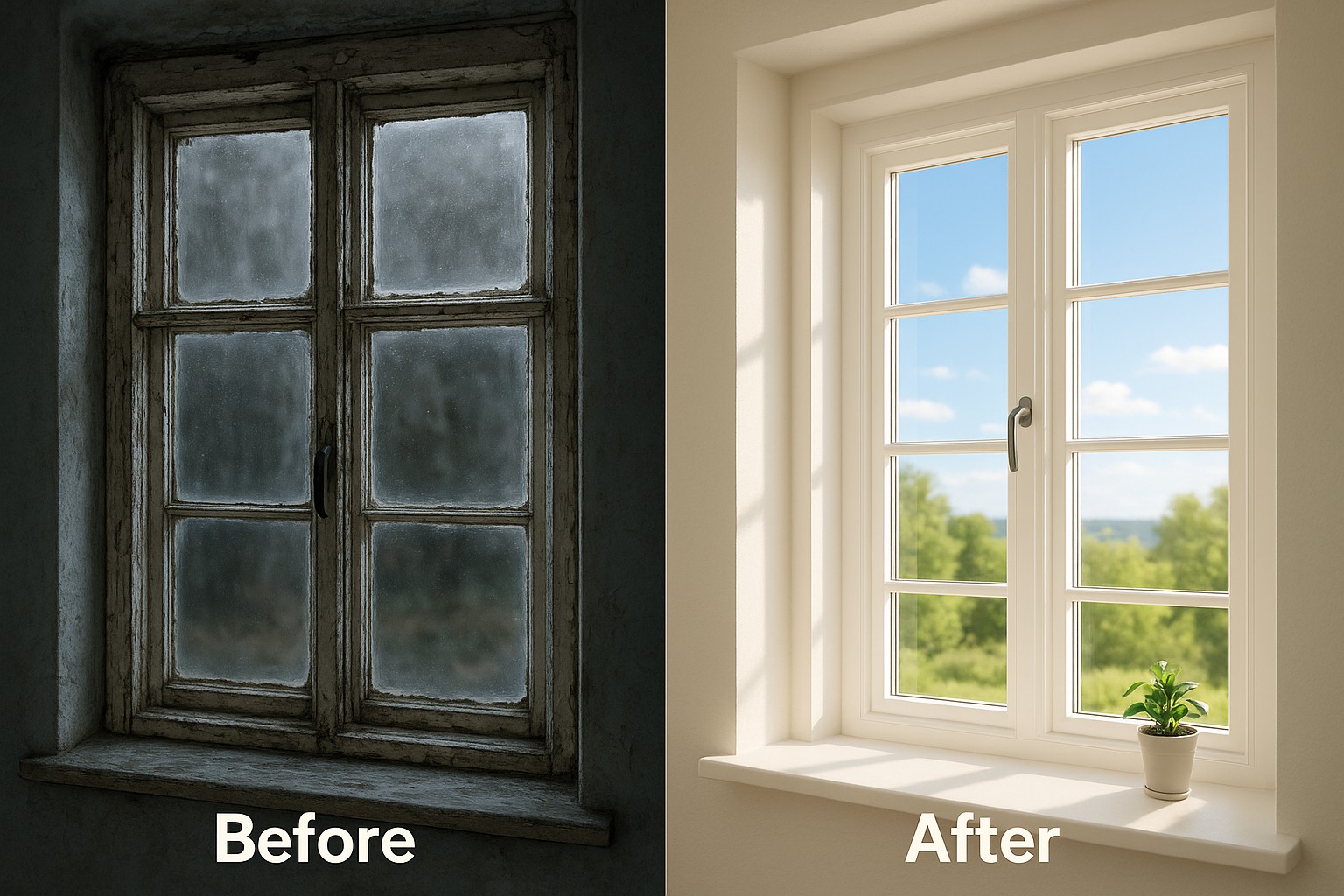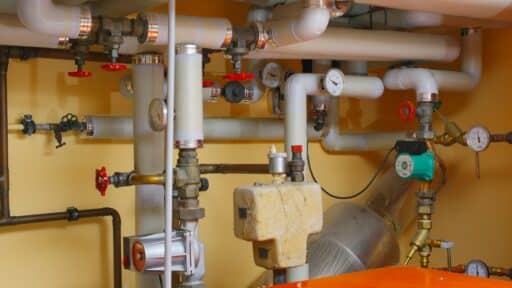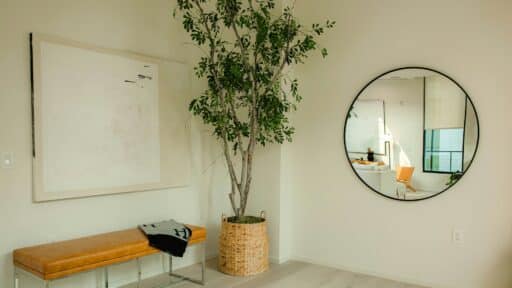If you live in a home with a bit of history, you know the feeling. A damp, chilly evening, the heating is on full blast, yet you can still feel that persistent cold patch near the beautiful old windows. It’s the costly whisper of escaping heat, a familiar problem in Britain’s gorgeous period properties.
For decades, the standard advice has been to rip them out. Salespeople present glossy brochures of uPVC replacements, promising an end to draughts and a beginning to lower energy bills. It’s a compelling story, and many homeowners believe replacing their original timber windows is the only sensible option. But what if that’s a costly myth? Imagine a family in a Victorian terrace in Manchester saving over £1,000 a year, not by erasing their home’s character, but by investing in it.
Here’s a surprising fact: a well-restored, draught-proofed timber window can beat a standard modern replacement on energy efficiency. With energy prices soaring, the choice between charm and savings feels tougher than ever. But don’t fall for the sales pitch — your old windows might be smarter than you think.
Are Your Old Windows Really Past It? The 5-Minute Check
Before you even pick up the phone to a replacement company, grab a torch and have a proper look. This simple check will tell you a lot about the hidden potential in your windows. Gently probe the wooden sill and frame. Are you dealing with a bit of flaking paint, or is the wood beneath soft and crumbly? A cosmetic touch-up is simple; extensive rot is a bigger job, but often not a fatal one.
Can the window still open and close, even if it’s a bit stiff and rattly? You are looking for good bones. Windows are almost always worth restoring if they possess:
- Solid timber: The main structure of the frame and sashes is still firm.
- Intact joints: The corners where the wood is joined together are still tight and not pulling apart.
- Functioning hardware: The original locks and mechanisms are still in place and could work with some attention.
Think of your windows as vintage craftsmanship, not a burden. That old timber? It’s slow-grown, dense, and built to last — nothing like today’s flimsy softwoods or plastic. Strip back the paint, and you’ll find quality. Skilled restorers know it’s not just salvageable — it’s valuable.
Before you rip out those charming old sashes, consider this: restoring original windows can actually save you money, reduce waste, and preserve the unique soul of your home. Many homeowners don’t realise just how much craftsmanship lies beneath the surface — or how much they’re throwing away when choosing plastic replacements.
The Restoration Journey: From Draughty to Delightful
Window restoration is far more than a simple paint job. It’s a meticulous process that transforms a window’s performance while honouring its past. The journey begins with the careful removal of the sashes, where every component is labelled to ensure it returns to its exact original position. This is when the true condition is assessed, and all the hidden issues are brought to light.
Next, the mechanics are reborn. Worn or broken sash cords are replaced with modern, durable materials that will last for decades. The original cast-iron weights are checked and re-hung to ensure the window glides open and closed with a satisfying smoothness, no more rattling or jamming. The geometry of the sash and frame is perfected for a snug fit.
The real game-changer is the draught-proofing. This isn’t about sticking unsightly foam strips around the edges. Experts will rout a discreet groove into the timber and fit high-performance, weather-pile seals. Once the window is reassembled, these seals are completely invisible, yet they eliminate up to 95% of air leakage. The final, crowning stage is the finish, where intricate details and historic colours are brought back to life, a delicate task where the expertise of firms like Сhameleon decorators & windows restoration truly shines, ensuring the result is both beautiful and historically appropriate.
A Modern Upgrade: Double Glazing Your Original Frames
For the ultimate fusion of period charm and modern comfort, you can retrofit your original windows with double glazing. This doesn’t mean bulky, ugly units. Specialist companies can now install slim-profile, gas-filled double-glazed panels directly into your existing timber sashes.
The benefits are transformative:
- Heat retention skyrockets, cutting heat loss through the glass by 60-70%.
- Noise pollution from outside is drastically reduced, a blessing for town and city living.
- Condensation on the inside of the glass on cold mornings is virtually eliminated.
- Security is improved thanks to the use of stronger, tougher glass.
This is a specialist’s job. It takes precise load calculations and careful glazing to keep the frame’s slim, elegant look. You can even pick glass with special coatings to boost energy efficiency or cut down noise.
The Clear Results: Savings and Value
The numbers speak for themselves. A full uPVC replacement for a typical three-bedroom period house can easily set you back £10,000 to £20,000. In contrast, a comprehensive professional restoration and draught-proofing project often falls within the £5,000 to £10,000 bracket. For those with some DIY skills, tackling the work yourself could reduce the cost to £2,000-£4,000 in materials.
The payback is remarkably fast, with the cost of restoration often recouped in energy savings within 3 to 5 years. More importantly, preserving original features is a huge plus in the UK property market. It can increase your home’s value by a significant margin, as prospective buyers of period homes actively seek out authentic character. Original windows are an investment; plastic replacements can actually devalue your property.
Your Action Plan for a Warmer, Quieter Home
Feeling inspired? Here’s a simple, step-by-step plan to get started.
Step 1: Play Detective (Weeks 1-2) Carry out your own inspection. Decide on your priority windows (start with the coldest, north-facing rooms). Get quotes from two or three reputable restoration specialists. Ask to see examples of their work on similar properties.
Step 2: Get Your Ducks in a Row (Week 3) Once you’ve decided on your approach (professional, DIY, or a mix), book the work in or order your materials. Prepare the room, moving furniture and putting down dust sheets.
Step 3: The Project Unfolds (Weeks 4-8) Stay involved. Whether you’re doing the work or someone else is, document the process. As each window is finished, test it out. Feel the difference. Notice the silence.
Step 4: Enjoy the Rewards (Ongoing) Keep an eye on your energy bills and enjoy watching them fall. Your restored windows will need minimal maintenance, just a clean and a check-up every few years. You’ve not just improved your home, you’ve become a custodian of its history.








